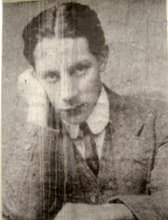Polirritmo Poetry
(Life in motion)
By Poet Laureate, Dennis L. Siluk Ed.D.
First of all, the founder of Polirritmo poetry, or life in motion poetry, was Juan Parra del Riego. In a time of modernism, he took a step out of the box you might say, and Cesar Vallejo, who knew Juan Parra, criticized him for it, in that he felt his poetry had lost something. And perhaps he did, but he preferred to write about culture and life as he saw it moving. We see this in his motor cycle poem called, “Dynamic Polirritmo of the Motorcycle”; also, in parts of “Canto to the Carnival,” and so on.
He was born in Peru, in Huancayo, and moved to Uruguay. Some folks have disputed if he be a Uruguay Poet, or Peruvian Poet. If you were to go to Lima or Huancayo, and look for a book written by Juan Parra, in the bookstores, you’d not find one today, yet the Peruvian people prefer to own him, it is a shame they boast of him, yet do not honor him in their schools, and bookstores, and the best I can say on this is, he loved Peru, more than Peru loved him; sad to say, but true, because he wrote a lot about Peru.
While in Paris he met with the new movement called, “Vanguardia,” this would be his choice and circle of friends. Cesar Vallejo would make fun of his poetry, as I mentioned before, saying it lacked, but we must remember Vallejo, was a dark deep moody writer, and not particularly interested in culture, or motion, and he was his rival, they were friends, and while Juan Parra was searching for life and motion, Vallejo was digging deep into the abyss to find his soul.
What Cesar Vallejo didn’t understand, is what many readers of William Faulkner did not understand at first. Faulkner didn’t use periods often, and run sentences into the others that seemed like they didn’t belong there, but his reasoning I do believe was he wanted the reader not to stop reading, or slow down, so he took the periods out, and when he made a new paragraph, he wanted the reader to slide into it, so off came the commas and periods and semicolons. In a like manner, Juan Parra I do believe, cutout the stanza in his motion poetry (for the most part), so the reader could build up the momentum he wanted them to… also his rhyme schema is closer nit than Vallejo’s for that same very reason, in Polirritmo.
Note: To be quite honest if it were not for folks like Cultural Editor Apolinario Mayta Inga, TV cultural host, Cesar Gamarra Berrocal, Jamie Bravo Gaspar, and myself, the name Juan Parra would still be a secret to the few (and surely and worldwide). His poetry is refreshing, alive, and gripping, and perhaps the best poet Peru and Uruguay has ever produced.

